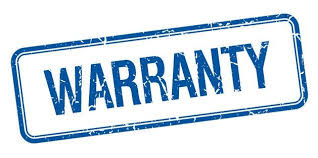“A customer is never out of warranty, even if his product is”: Seth Godin
Rejection is part and parcel of our life. It may be in a relationship, business or sports. The important point is what we do with rejection. Do we succumb under it or we raise ourselves and find possible solutions?
Something similar is with Warranty Management in Industry. Although the intention is not to produce and despatch any rejection but sometimes it does happen which translates into customer end rejection, zero Kilometer rejection (dealer end), Warranty/Field failure or recall.
A warranty is a contractual obligation incurred by the manufacturer in connection with the sale of the product. The purpose of the warranty is to establish liability in the event of the premature failure of a product or the inability of the product to perform its intended purpose.
OEMs (Original Equipment Manufacturer) extend warranties to emphasize product quality and combat competitors. Warranty management has a direct impact on the profitability of an OEM, its dealer network and other supply chain partners.
In IATF 16949 Standard, the following is the definition related to Warranty.
No trouble found (NTF) – Designation applied to a part replaced during a service event that, when analysed by the vehicle or parts manufacturer, meets all the requirements of a “good part” (also referred to as “No Fault Found” or “Trouble Not Found”)
Following are the clauses of IATF 16949 where the reference of Warranty / Filed Failure / Recall is specified
| Requirement | Clause |
| Risk Analysis | 6.1.2.1 |
| Product Design Input | 8.3.3.1 |
| Supplier Monitoring | 8.4.2.4 |
| Post Delivery activities | 8.5.5 |
| Feedback of information from service | 8.5.5.1 |
| Customer Satisfaction | 9.1.2 |
| Management Review Input | 9.3.2.1 |
| Problem Solving | 10.2.3 |
| Customer Complaint & Field Failure test analysis | 10.2.6 |
| Annexure B | CQI 14 |
| Annexure B | VDA Audit Standard Field Failure Analysis |
IATF subscribing OEM’s have specified some requirements related to Warranty.
| BMW, GM, Peugeot | Not defined |
| FCA, USA | CQI 14 3rd Edition, PS 11346 Procedure, Customer Satisfaction Metrics, CQI assessment annually |
| FCA, Italy | CQI 14 3rd Edition |
| Ford | PPGT & C’s |
| VW | VDA- Field Failure Analysis |
| Renault | May lead to Special Status Notification: Business Hold through Red / Yellow List Procedure |
Warranties reflect far more than an OEM’s or supplier’s confidence in its product. They are also
- a selling strategy
- a tool for customer retention
There are many reasons for high Warranty.
OEMs’ top issues are
- Resource shortages
- Lack of product design involvement
Suppliers’ top issues are
- Lack of collaboration with the OEM/supplier
- lack of diagnostic data
- lack of product design involvement.
Some of the key action points to control warranty is by asking the following question (5W, 1H):
- Whose involvement (employee, Suppliers, Dealers, Consumer) and leadership are needed to increase collaboration (to understand facts and take a decision)?
- What more should companies be doing to improve warranty cost-effectiveness?
- Where do collaboration breakdowns occur most frequently (working in silos, no teamwork)?
- Why do they happen?
- When should an organization analyse the data to take desired actions?
- How can we use warranty management to improve the overall quality and reliability of parts, systems and vehicles?
As per clause 10.2.5 of IATF 16949, when specified by the customer, the organization shall implement the required warranty management process.
As per Clause 8.5.5.1 (Feedback of information from Service), the organization has to establish a process of communicating any service concern (Warranty) to related process owner in the organization so that suitable action can be taken and its implementation can be shared.
Key steps for Warranty Management:
1. Sources of information related to warranty
(service) parts
2. Methods of collecting warranty parts
3. Methods of investigation of returned
warranty parts
4. No trouble found case management
5. Reporting findings and implementing
corrective actions
6. Sharing lessons learned / preventive
actions
Possible KPI by an organization:
PPM – (warranty) parts per million (of parts delivered to the customer)
Cost ratio – Cost of warranty compensations against sales value
Cost per unit (CPU) or Cost per Vehicle (CPV): The calculated cost of warranty-related repairs by totalling the sum of the repair costs divided by the number of vehicles produced to determine a per-vehicle cost.
Global KPI:
Warranty Claims Totals: Total amount of warranty cost paid by OEM’s and their suppliers in a year.
Average Claims Rates: Average of last 5 years
Warranty accrual Total: Tentative cost of warranty cost set aside for a year (assuming that warranty will come after some time).
Average Accrual Rates: Average of last 5 years
Accruals per Unit Sold: Tentative cost of warranty per vehicle sold
Warranty Reserve Totals: Amount kept aside every year for warranty failure cost
Worldwide Auto Manufacturers
Average Warranty Claims Rates
(as a percentage of sales, 2014-2018)
Benefits to Top Management:
- Cost of rejections will be low
- Sustainability of the organization will increase
- Quality consciousness will improve
- Delivery performance will improve
- Possibility of getting new business improves
Some question to ponder:
- Do organization have an agreement with their suppliers related to warranty failure?
- Do organization have a systematic analysis of the warranty rejection?
- Do the organization communicate the importance of warranty in the organization?
References:
IATF 16949: 2016
Customer Specific Requirements (CSR)
iatfglobaloversight.org
CQI 14: Automotive Warranty Management Guidelines
This is the 33rd article of this Quality Management series. Every weekend, you will find useful information which will make your Management System journey Productive. Please share it with your colleagues too.
Your genuine feedback and response are extremely valuable. Please suggest topics for the coming weeks.

I like it